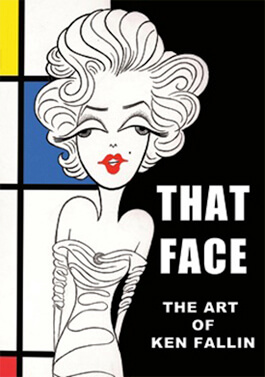The sinuous, snaky, seriously sexy moves of Bob Fosse have got to be the most recognizable choreography in the world, endlessly quoted and imitated to the point of cliche. In 2013, Sam Wasson wrote a mesmerizing, tell-all biography of him, seemingly leaving out no cigarette, drug, or nubile chorine the complex, hard-living genius ever touched. It exhaustively covered his kaleidoscopic life, and now we have the best book ever written about Fosse’s work itself: “Big Deal: Bob Fosse and Dance in the American Musical,” by Kevin Winkler.
It must be said the Bob Fosse has been particularly lucky in this scribe, as well, for Winkler, a former dancer himself, knows the art form inside and out and has the lucidity and clean, detailed, yet unfussy approach of a real writer to aptly delineate Fosse’s undying contribution to it.
Once executive director of the New York Public Library for the Performing Arts at Lincoln Center, Winkler worked on the book for about six years and, happily in this challenging time for publishing in general, never had to arduously shop his project round.
“I did a presentation about Fosse at a conference in Washington, DC,” he told me over lunch at charming West Village landmark Sweet Life. “Someone from Oxford Press was there and, when I got back to New York, he contacted me and asked if I would be interested in doing a book on Fosse as part of their Broadway Legacy series. I felt the need to do it, because there was no academic book about his choreography, only about his personal life.
“Writer friends of mine assured me that you don’t get rich writing academic books, but libraries and schools have already bought a lot of copies and we’ve gotten some good reviews. Kirkus liked it and Joan Acocella wrote a favorable review for The New York Review of Books.”
To Winkler, what’s striking about Fosse is that his basic weakness — his limited dance vocabulary — is perhaps his strength as well: the turned-in toes, cocked and arched backs, serpentine and jazzy hand gestures so easy to parody. Indeed, choreographic lingua franca visually mirrors the familiar hypnotically dogged, Middle Eastern-sounding trademark vamp and sophisticated brassiness of the John Kander/ Fred Ebb songs they so often accompanied (“Cabaret,” “Chicago”). The fact that he was able to take these basic moves — both sexy and a little daffy — and create so many dazzling and different dances was true mark of his brilliance.
Brilliant too, was the way he incorporated dance into his films, which, like me, were Winkler’s first introduction to Fosse.
“Something about his musicals was so different from the others. While in high school I saw the film of ‘Sweet Charity,’ in which the dances were more dramatic and very carefully placed in scenes, and after that film came ‘Cabaret’ in 1972. Forget about it!
“From the opening, with Joel Grey popping up on the screen to the very end when the camera pans to reveal the Nazis, I felt like he was inventing a new cinematic language for musicals. And when he layered dance into the narrative, you knew you were seeing something completely different that maybe took you aback a little. I sat through the movie twice and had to explain that to my worried mother, waiting for me at home.”
The film may have jettisoned a lot of the musical’s book involving Sally Bowles’ endangered Jewish landlady and the rise of the Nazis to make it more of a Liza Minnelli vehicle, but I also remember how — made as it was just three years after Stonewall — affirming it was for me, with my burgeoning but closeted sexuality, in its presentation of gay men as handsome, charming, witty, and fun, for what seemed like the very first time on film. Michael York and Helmut Griem, as the bisexual Baron, were mad-sexy and charismatic, nothing like the stereotyped mincing Paul Lyndes and Charles Nelson Reillys who had long impersonated us, or the suicidally depressed weirdos and losers of movies like “Advise and Consent,” “The Best Man,” “The Sergeant,” “Victim,” “The Staircase,” “Reflections in a Golden Eye” and the basically no-fun zone represented by all “The Boys in the Band.”
“When I moved to New York, I saw all of his shows,” recalled Winkler, “‘Pippin,’, ‘Chicago,’ ‘Dancin’,’ and I remembered how effortlessly he could create eroticism on the stage, sculpting the body with lights like the ballet in ‘Pippin,’ of all his women falling all over him, in a kind of Kama Sutra arrangement, fucking with gender, etc.”
Winkler actually met Fosse when he was in the chorus of a revival of the show “Little Me,” on the day that the Great Man was brought in to fine-tune the choreography. Doing lifts was never a dance area in which he sparkled, Winkler admitted. But when Fosse finally came down the chorus line — who’d all worn their best rehearsal outfits for the him — to our author and asked him to do a lift, don’t you know that sheer terror made him do the best one of his life, hoisting his partner up like the Colossus of Rhodes.
An impressive number of interviews were garnered for the book, but Winkler said, “I didn’t go crazy, trying to track down everybody, but concentrated on those who had worked in shows with him, like Tony Walton, the set designer of the dazzling original production of ‘Chicago,’ on whom he often relied, and who won the Oscar for the movie ‘All That Jazz.’ Also, Jules Fischer who did the lighting for his shows and was a producer of ‘Dancin’.’”
One get Winkler got who particularly fascinated me was Suzanne Charny, for me the ultimate Fosse dancer, in the “Rich Man’s Frug” number in “Sweet Charity,” who, with her pendulous ponytail and “serpentine intensity,” as Rex Reed once described, positively defines his style.
“She lives in LA and was very sweet. She’s an artist now, a sculptor, I believe, and told me she was cast in the film because of her look, so tall and she could really bend her spine all the way back, practically into a right angle. She got some more work out there in TV, and when Raquel Welch got sick, Bob Hope took her to Vietnam to entertain the troops. She said when he brought her onstage to do her go-go number, all the men cheered and she felt like a real sex symbol!”
Sometimes, unfortunately, even the most dedicated biographer can seriously fall out of love with his subject when, however great the achievements, personal flaws and failings may alter one’s view of a person. I asked Winkler how he felt after devoting all this time and effort to a man who, by many accounts, was not easy.
“I came away with the feeling that, for all his neuroses and complexity, Fosse was basically a decent man. I went through his papers in the Library of Congress, and they were filled with long letters from young dancers asking him for career advice. Would you believe he answered every single one of them, telling them all to study ballet for a strong technique, stay in school, and go for any opportunity to be on and learn about the stage?
“There were also many surprising letters from dancers who had failed their auditions for him, amazingly, thanking him for his respect, attentiveness, and patience.”
Along with all of Winkler’s seriously rewarding analyses of Fosse dances, this eminently readable book is chockful of the kind of juicy showbiz lore we all crave. For instance, that was Fosse’s vest Liza Minnelli wears in the “Mein Herr” number in “Cabaret.” Barbara Cook was originally considered for the multi-octave role of Little Mary Sunshine, the sob sister reporter in “Chicago,” before the tradition began of always casting it with a man in drag. Fosse worked for a minute on “Funny Girl,” before being replaced, due to his enmity with its producer Ray Stark, and was responsible for turning the hit song “People” from a trio, as originally planned, to that big fat star-making solo for Streisand. Also, he devised the staging of her “Hello, Gorgeous” entrance in the show. “The Rich Man’s Frug” number was full of nicknames for the various moves: the haughty, stick-up-the-ass way the men walked was the “Danny Kaye traveling step.” The way the women moved was the “Marion Marshall walk.” Marshall, an obscure actress once married to Stanley Donen, had a pelvis-first, slouching stride, typical of debutantes of the 1950s, which choreographic magpie Fosse never forgot.
BIG DEAL: BOB FOSSE AND DANCE IN THE AMERICAN MUSICAL | By Kevin Winkler | Oxford University Press | $29.95 | 368 pages




































